-
-
학생용 무료 소프트웨어에 액세스하기
차세대 엔지니어에게 힘을 실어주는 Ansys
학생들은 세계적 수준의 시뮬레이션 소프트웨어를 무료로 이용할 수 있습니다.
-
지금 바로 Ansys에 연결하십시오!
미래를 설계하기
시뮬레이션이 다음 혁신을 어떻게 지원할 수 있는지 알아보려면 Ansys와 연결하십시오.
국가
무료 트라이얼
제품 및 서비스
학습하기
회사 정보
Back
제품 및 서비스
ANSYS BLOG
December 22, 2023
Veterans Hospital Experience Motivates High School Student to Improve Prosthetic Design Using Simulation
Over the last few years Anish Sarkar, a high school sophomore, has volunteered at the local veteran's assistance (VA) hospital in Palo Alto, California. While there, numerous veterans frequented the hospital for prosthetic fittings. Sarkar learned that more than 1700 soldiers lost their limbs in Iraq and Afghanistan. In addition to limb loss from trauma, people suffering from conditions like diabetes and other illnesses also face amputations. In the United States alone, more than 500 people a day experience limb loss, yet only 5% have access to prosthetics.
During rehabilitation, veterans would often return due to issues with their prosthetic socket. Sarkar wanted to find a way to contribute to the development of a superior prosthetic socket design, aiming to alleviate the stress and exhaustion endured by wearers.
Simulating Pain-free Prosthetics
Sarkar studied the design and material choices behind creating prosthetics, focusing on the socket. He explored a novel structural approach to address the existing limitations they have, utilizing finite element analysis (FEA) simulations to study the characteristics of different prosthetic structures that are currently used under different working conditions to imitate real-life scenarios.
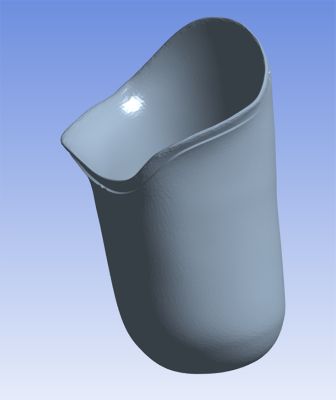
General socket model from initial tests
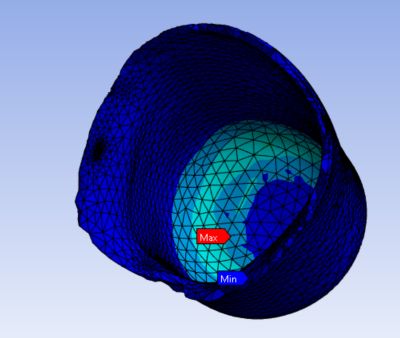
Stress from walking in the general socket
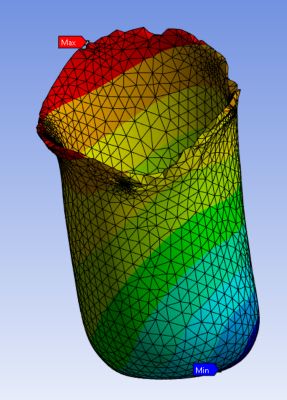
Total deformation of general socket from running
The primary goal was to identify the sources of pain resulting from the prosthetics. With the help of Ansys free student software available through the Ansys Academic Program, Sarkar used Ansys Spaceclaim to prepare the prosthetic socket models for simulation. The socket models he sourced online and from his personal design were not immediately compatible with Ansys Mechanical due to missing faces and sharp angles, among other factors, yet Spaceclaim’s tools proved invaluable in rectifying these geometric issues.
Sarkar conducted a comprehensive analysis of stress, strain, and load distribution in the interface between the residual limb and the prosthetic socket throughout the gait cycle, using Mechanical. Additionally, he tested digital models of sockets under the scenarios of walking, running, and standing to account for various life events.
“Mechanical was valuable for this project since it thoroughly revealed the flaws and issues in sockets that are in use today since I can’t physically use a prosthetic socket," Sarkar says. "Additionally, I needed to identify where the socket accumulated stress to know where improvements in the socket design were needed, which is not something that is easily visible in real life. But Mechanical displayed the structural faults in the sockets in detail.”
The high school student also used Python scripting to simultaneously manage the different environment variables within the simulation. Because he ran simulations for diverse models and materials within the same scenario, the Python script was used to facilitate the alteration of the force exerted by the amputee’s residual leg on the socket, as well as the assignment of the distinct materials to the socket. This approach significantly increased the number of simulations run, eliminating the need for manual adjustments with each iteration.
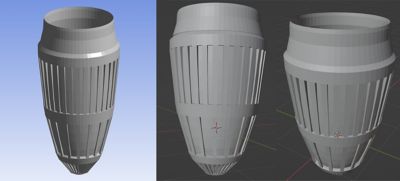
The final socket after the simulations
Ansys Workbench played a crucial role in managing all the component systems such as the engineering data (materials), mechanical models (models/geometries), and static structural (simulation environment). This work proved highly beneficial in managing the different socket models, ensuring the utilization of the same materials across the various static structural simulations.

Ansys Workbench management of component systems
Sarkar honed his proficiency in creating workflows by linking component systems together, thereby expanding the scale of the project and simulations. Within this process, he also learned how to vary the force exerted on the socket during the simulation of the gait cycle. Additionally, Sarkar developed Python scripts to automate manual tasks such as assigning materials to the models and creating forces with custom properties.
“The user-friendly and intuitive nature of Workbench empowered me to effortlessly configure projects involving multiple models and simulations,” Sarkar says.
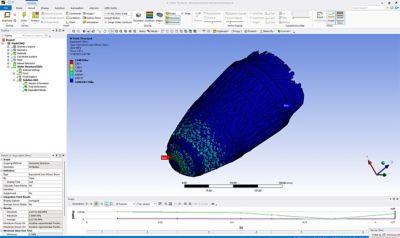
Total deformation of the improved socket from running
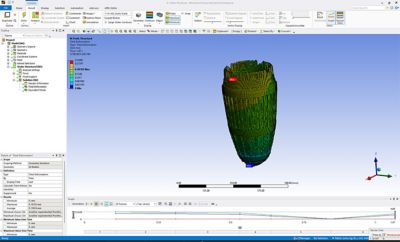
Total stress of the improved socket from walking
Sarkar’s software-based design approach and analysis demonstrated the ability to customize sockets for every patient much more efficiently than traditional socket lamination techniques, which are both time and resource intensive.
After conducting simulations with Mechanical, Sakar submitted his project of a new prosthetic socket design to the Golden Gate Science Fair. His efforts were awarded with the Lemelson Young Inventor and Chevron Special awards for showcasing the use of simulations to help enhance people’s quality of life by using fundamental principles to identify issues with a current biomedical device and provide an engineering solution.
Learn more about how you can access free simulation software with the help of the Ansys Academic Program.